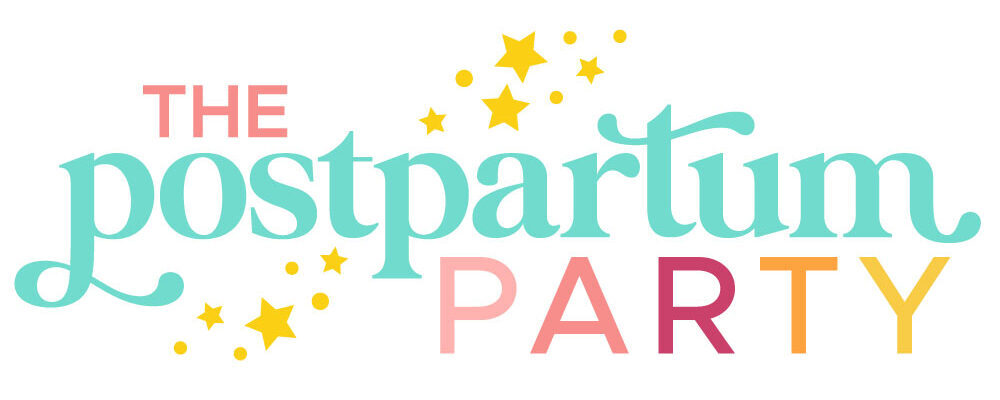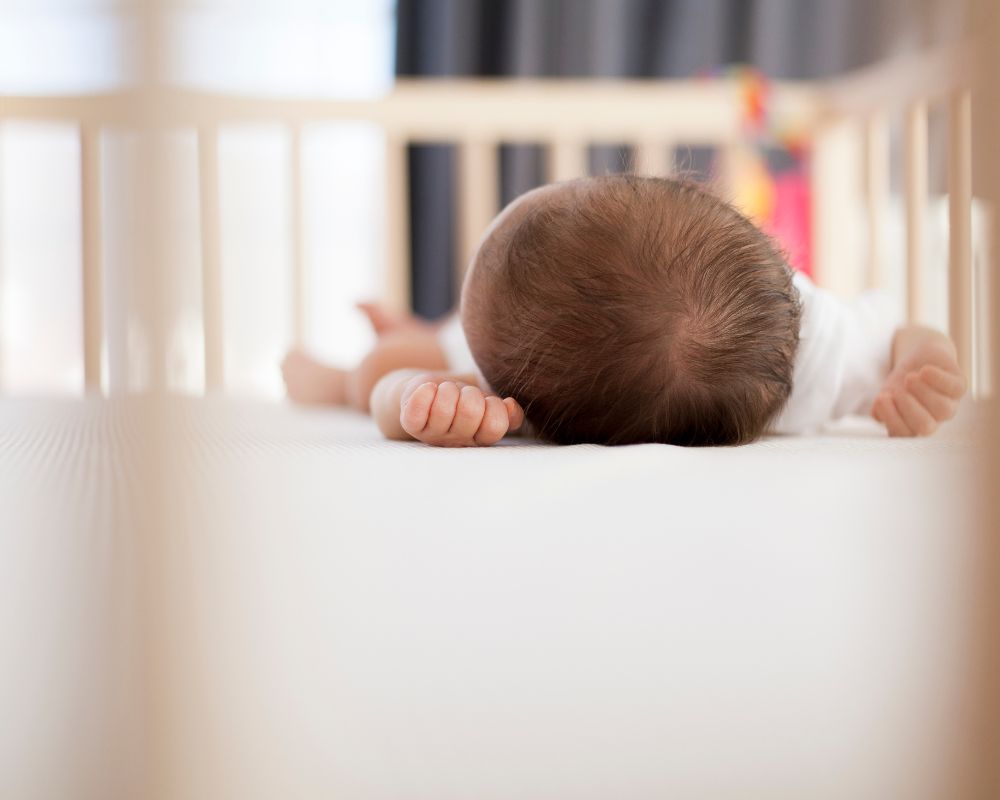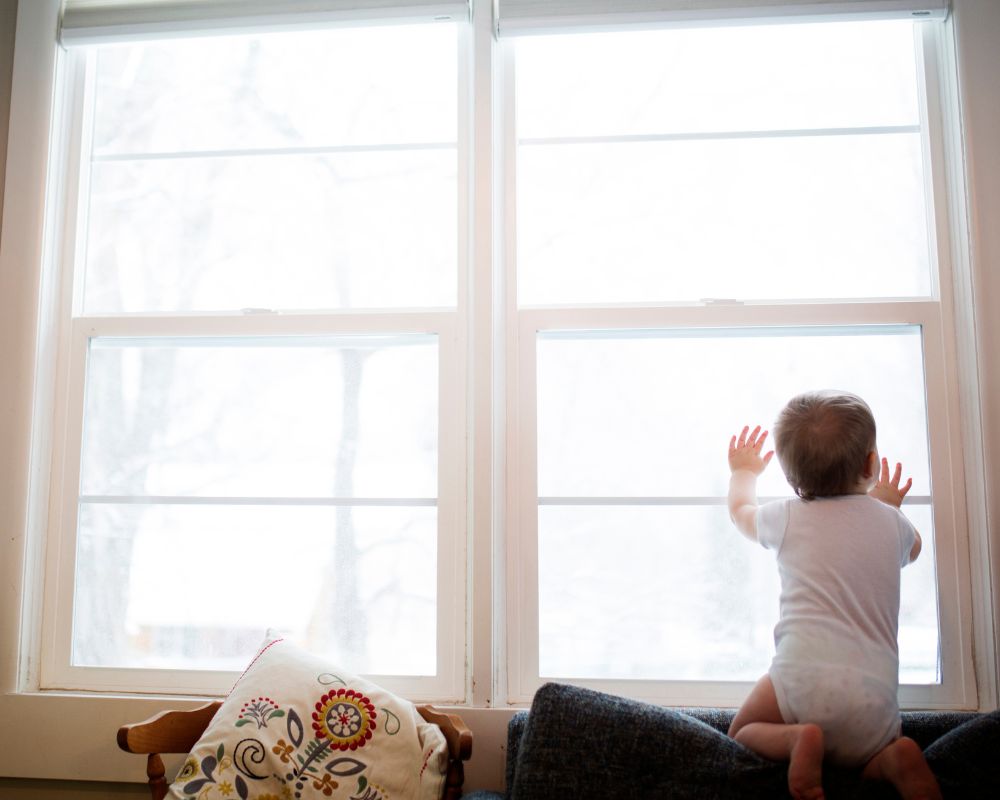Daylight Savings 2024 begins Sunday, March 10, at 2 a.m. See how you can spring forward and adjust your baby’s sleep with daylight savings.
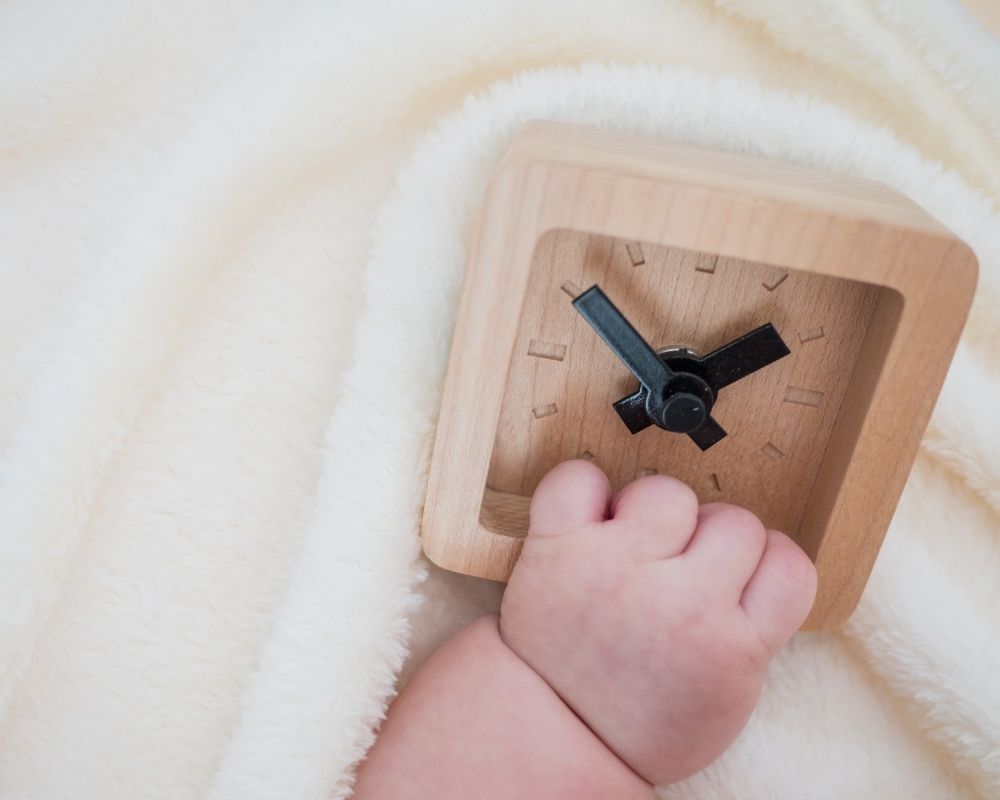
The clocks are changing, which means more sunshine and longer days!
We’ll also lose an hour of sleep, and your baby’s sleep schedule may get messed up.
Let’s talk about Daylight Saving 2024 and how to get your baby’s sleep schedule back on track after a time change.
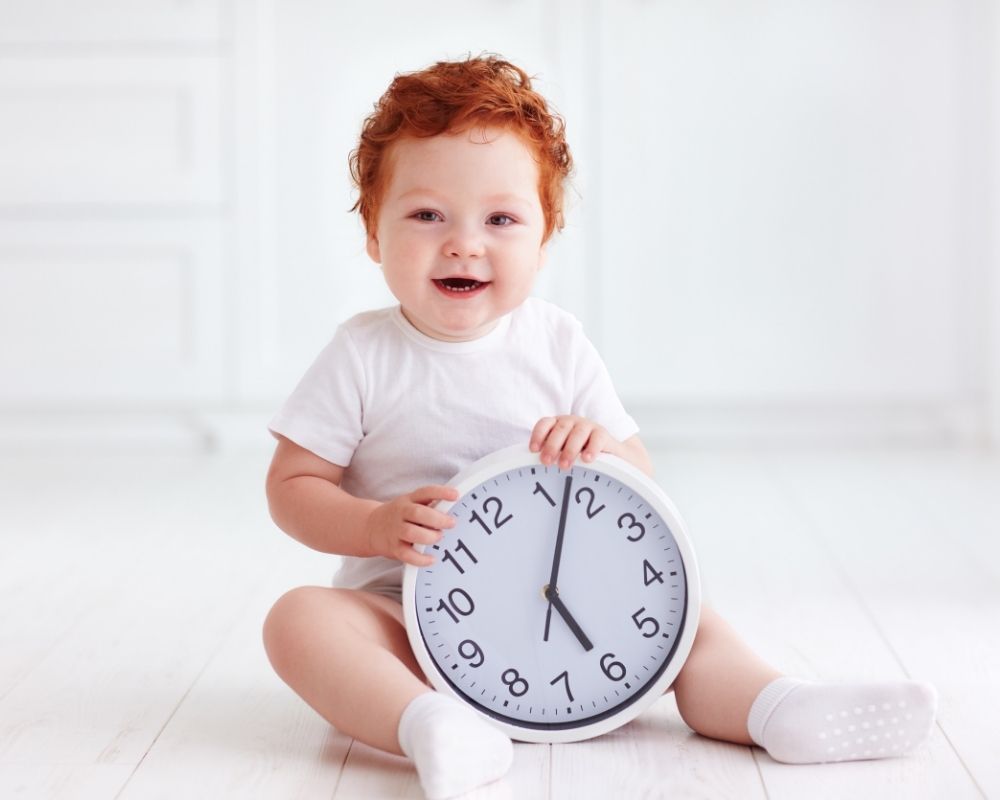
How Do I Get My Baby Back on a Sleep Schedule After Daylight Savings?
One good thing about a time change is that we know exactly when it’s going to happen.
That means we can prepare for it!
And since there is never just one way to do things, you have a few options for how to help your baby’s sleep with daylight savings.
One thing I always recommend is to wait and adjust your clocks in your house until after you’ve woken up and had your cup of coffee.
There’s something mentally depressing about seeing 6 am on the clock, even if your body got the same amount of rest.
Now, here are some ways you can prepare your little one for a successful time transition.
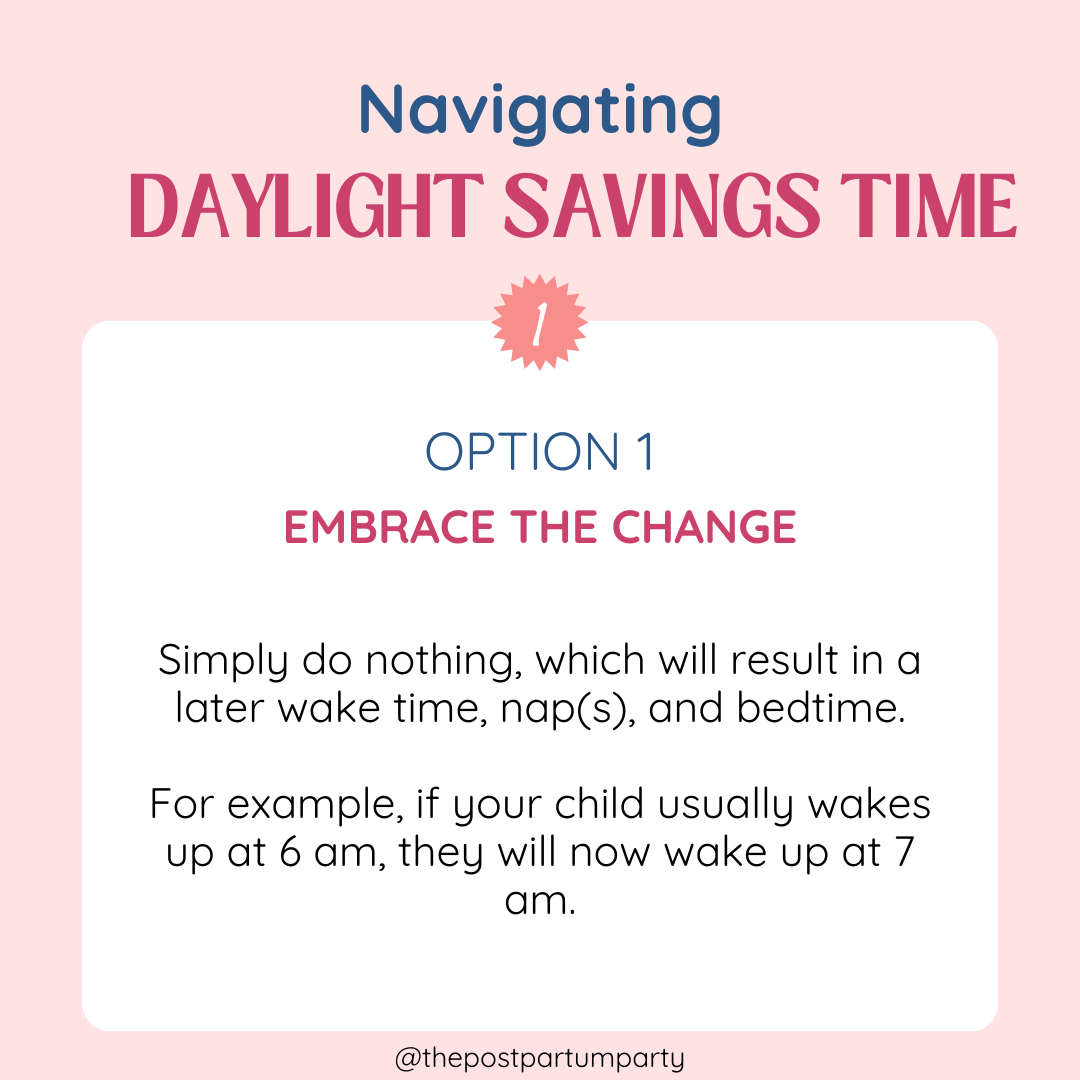
Option 1: Embrace the Change
One approach is to embrace the time change! This option is really great for families who want a later start time to their day.
To follow this option, you would simply let your child wake up at their usual time, although this will appear 1 hour later on the clock.
For example, if your child usually wakes up at 6 am, they will now wake up at 7 am.
Nothing else will change here, other than the timing of things.
Nap time will be one hour later (if you’re following a time-based schedule) and bedtime will be one hour later.
If you follow a wake windows schedule, you will continue to do so.
If you can’t shift things one hour later due to school or daycare schedules, then one of the following options may be a better fit for you!
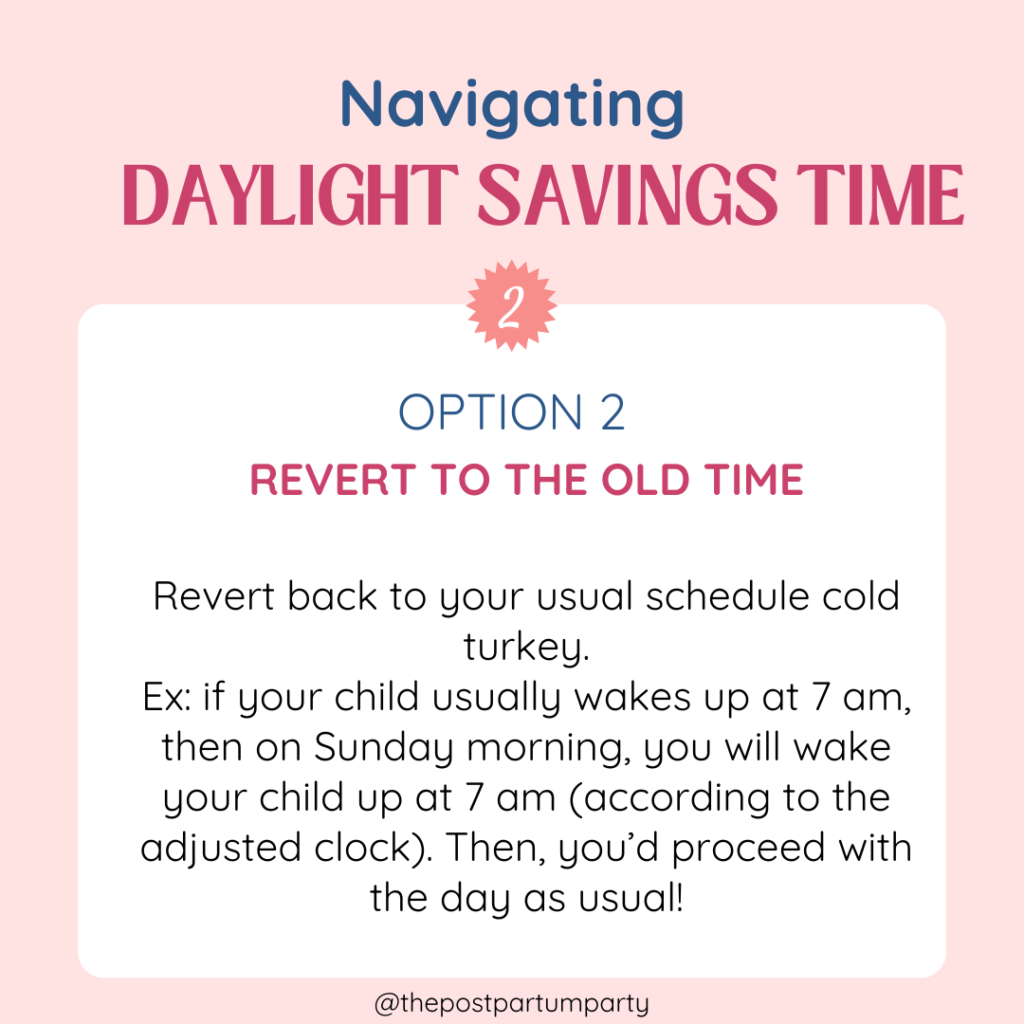
Option 2: Revert to the Old Time
Another option is to revert back to the old time cold turkey.
For instance, if your child usually wakes up at 7 am, on Sunday morning, wake your child up at 7 am (according to the adjusted clock). Then, you’d proceed with the day as usual!
If you go with this option, you may find that your little one is a bit more tired, since technically, they did get one hour less of sleep.
However, within a few days, their internal clock will catch up and you’ll see that they are able to handle their new schedule well.

Option 3: Gradually Adjust Back to the Usual Time
For parents who prefer a middle-ground approach to daylight savings and baby sleep, gradually adjusting your child’s schedule back to the usual time can be effective.
This involves shifting daily routines, such as meals, naps, and bedtime, by 15 minutes earlier each day until you reach the desired schedule.
For instance, if your child usually wakes up at 7 am, on Sunday, you will actually wake them up at 7:45 am (this looks 45 minutes later on the clock, but will feel 15 minutes earlier than they usually wake).
Then, every few days, you will move that wake time 15 minutes earlier.
Here’s a sample, based on a 7 am wake up time:
Days 1–3: Wake your child up at 7:45 am
Days 4–6: Wake your child up at 7:30 am
Days 7–10: Wake your child up at 7:15 am
Days 11+: Wake your child up at 7:00 am
Of course, you can move at a faster pace, if you’d like to.
By making incremental changes over several days, you can help your child’s body gradually acclimate to the new time without causing significant disruptions to their sleep patterns.
This approach can be particularly beneficial for children who are sensitive to changes in routine or who struggle with transitions.
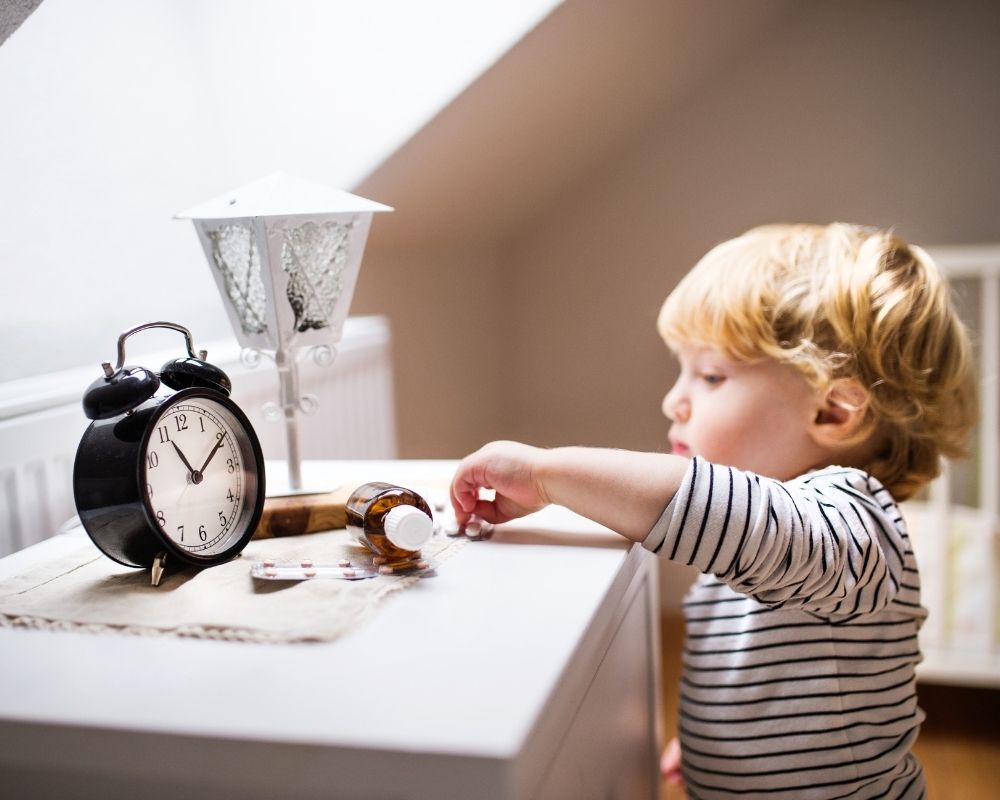
3 Tips to Help Baby Sleep After Daylight Savings
No matter which option you choose, here are some things that can help your child adjust to the time change.
Get Outside
Exposure to natural light, particularly in the morning, can help regulate your child’s internal clock and signal that it’s time to wake up.
Spending time outdoors during the day can also promote better sleep by supporting your child’s natural sleep-wake cycle.
Make the Room Dark
Making your child’s room dark can be super helpful during the spring time change.
See how to make their room dark and the best blackout curtains so you can darken their sleep space.
Blocking out the sun will make it easier for them to fall asleep.
Use an Okay to Wake Clock
To handle Daylight Savings sleep with a toddler, I recommend incorporating an okay-to-wake clock.
I really like the Hatch Rest and use it with my daughter.
There’s also the Rest Plus and you can see the differences between the Hatch Rest vs Rest Plus here.
Let your toddler know the sun will be coming up earlier than it used to, and their body might wake up before it’s time to get out of bed.
Encourage them to watch the clock for the right color before they leave their room.
During the spring time change, the okay-to-wake-clock helps signal that it’s time for bed even though the sun is still up.
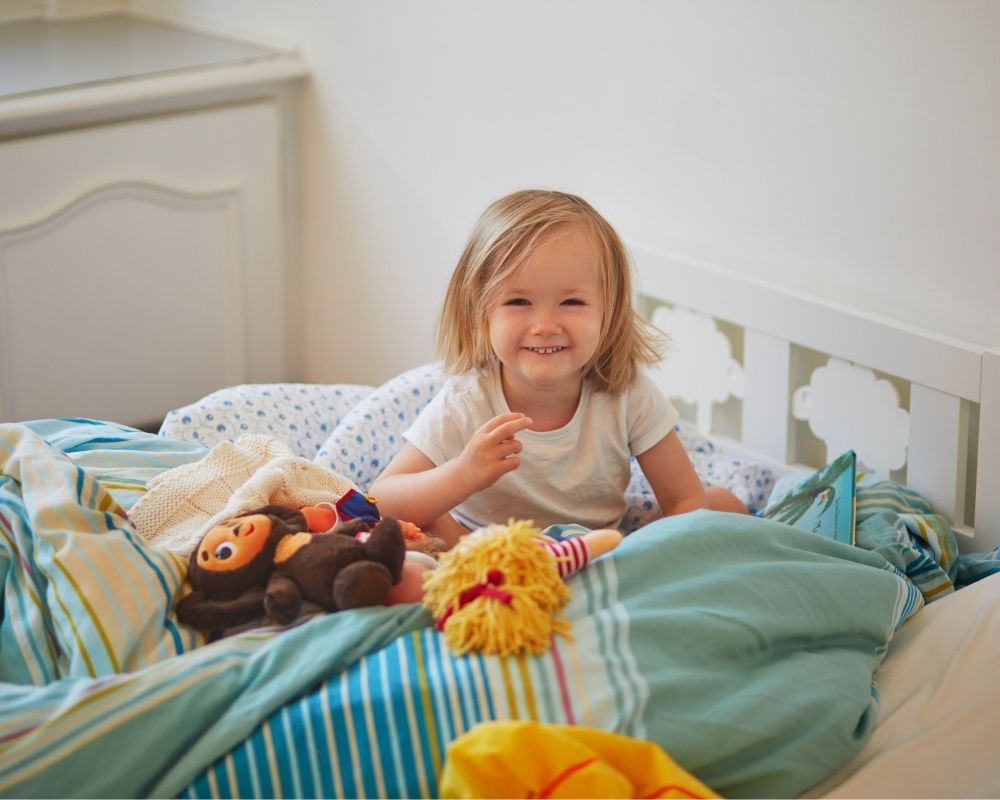
How Long Does it Take for Baby Sleep to Adjust to Daylight Savings?
Thankfully, just like most other sleep-schedule shake-ups, the Daylight Savings sleep disruption won’t last forever.
Most babies and toddlers will be able to adjust to the new time change within a week or so. Some little ones are even able to make the transition over just a few days.
Regardless of how you handle the time change, consistency is key when adjusting your child’s schedule for the time change.
Stick to a predictable bedtime routine, create a calming sleep environment, and prioritize healthy sleep habits to help your child adjust more smoothly.
With patience and consistency, you can help your child navigate the time change with minimal disruptions to their sleep routine.
If you have any questions about daylight savings baby sleep, leave them in the comments below.
PIN FOR LATER
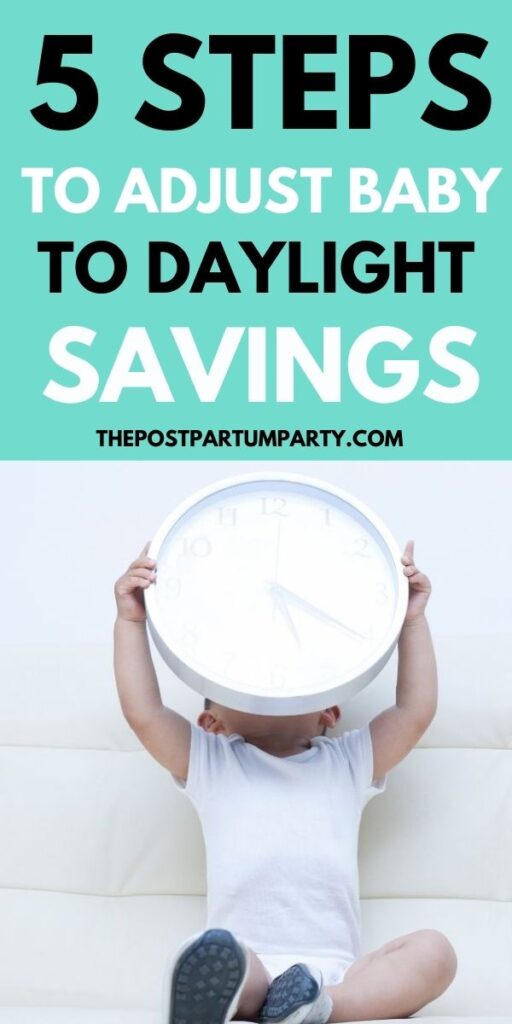
- Practical Tips if your Toddler is Going Through A 3-Year Old Sleep Regression - April 26, 2024
- Baby Led Weaning vs Purees — Which Should I Choose? - April 25, 2024
- 10 Adorable Letter Board Pregnancy Announcements - April 25, 2024
